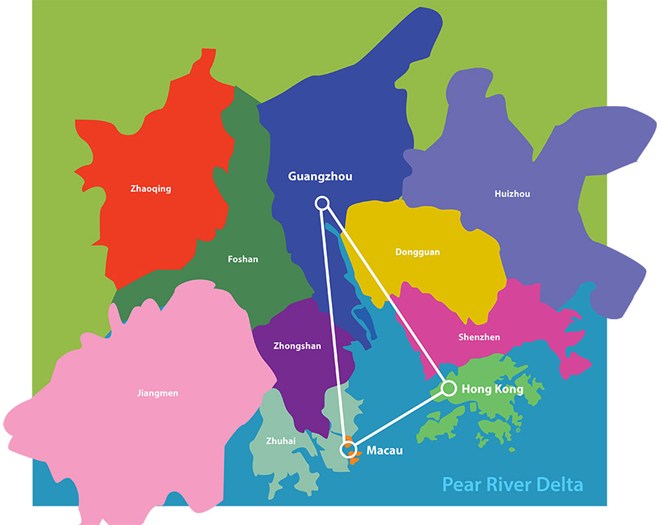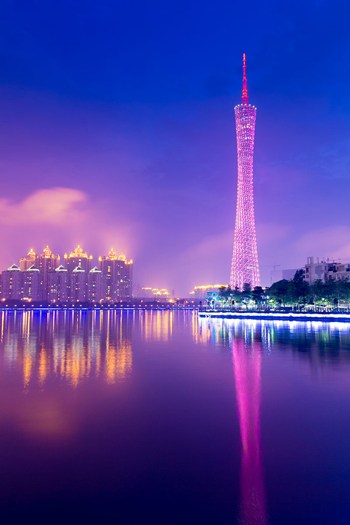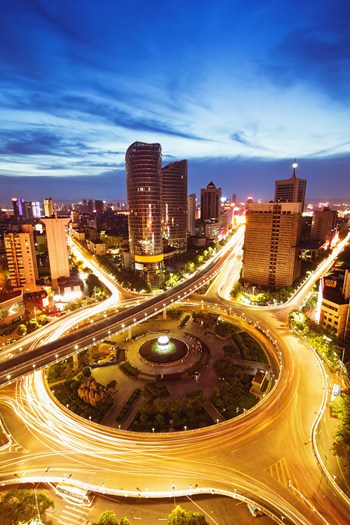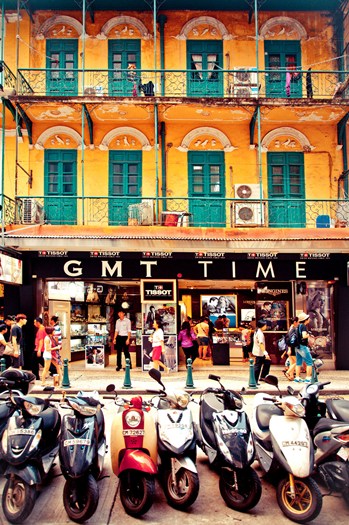GUANGZHOU, CHINA - Train No. T818 cuts through valleys lush with tropical vegetation and the jagged landscape known as the New Territories just outside Hong Kong whizzes past my window as the Guangzhou Express rushes towards the Chinese border.
Every seat in Car 7 is occupied — filled with tired Mainland shoppers returning from Hong Kong clutching bags filled with prized European designer goods. The Chinese, who now account for 25 per cent of all luxury brand purchases worldwide, flock to the former British colony in search of the latest runway designs which carry a hefty price tag back home thanks to China’s high import duties.
Our entrance into China is trumpeted simply by the screeching sound wheels make when they cross a steel bridge — a small river marks the border line separating the “Special Administrative Region” of Hong Kong and the Mainland. The only reminders that this was once where the “free world” ended and communist China began is a rickety old guard tower that looks like it may fall into the river at any moment.
I’m now on the final leg of my trip through the Pearl River Delta, a triangle-shaped (if you use your imagination) region of China whose points are Hong Kong, Macau and Guangzhou. The Pearl is the industrial heartland of China where more than 100 million people live and work producing almost every consumer good imaginable — if it says “Made in China” then it probably came from the Pearl River Delta.

Above: Guangzhou is the industrial giant that makes up the Pearl River Delta triangle.
And while Hong Kong and Macau may be better known globally, Guangzhou is the Pearl’s capital — the third largest city in China, and thanks to its awesome manufacturing base, the most prosperous city on the Mainland, whose population of 15 million (estimated) lives a far more liberal lifestyle than anyone else in China.
About an hour into our ride, the conductor tells us we’re approaching Shenzhen, Guangzhou’s neighbour, which has seen an industrial boom of its own over the past 30 years.
Shenzhen, where I take a day trip during my visit to Guangzhou, was an unknown outpost of 70,000 only 30 years ago, but today boasts a population of 12 million. Its glass-and-steel skyline, which stretches to the horizon, is among the most impressive I’ve ever seen.
Shenzhen, another of China’s “Special Economic Zones,” is a playful city where Hong Kong residents escape on weekends and gorge themselves on fresh seafood and get pampered in one of the city’s many spas — Shenzhen is said to have more massage parlours than all the other Pearl River cities combined.
The train pulls into Guangzhou station 2½ hours after leaving Hong Kong and, after checking into my hotel, I hail a cab and instruct the driver to take me to the city’s Old Town once known as Canton, whose history dates back 2,200 years.
As prosperous as Guangzhou is today, Canton was just as wealthy back in the 18th and 19th centuries when it welcomed traders from all over the world. Many Cantonese escaped to Hong Kong when Mao’s communists seized power in 1949 but most stayed, and even through the turmoil of China’s Cultural Revolution, this area prospered — thanks to the Cantonese dedication to innovation and hard work.
Walking down Giaoguang Road, whose tree-lined banks drop off into the slow moving Pearl River, I can still feel the Old World vibe of Canton. The stunning colonial architecture in this area and the bustling cafes take you back to when foreign powers ruled this part of China.
And because foreigners are not the anomaly here like in other Chinese cities, travellers are afforded more personal space and freedom.



Above: Guangzhou's modern skyline is one of the liveliest in Asia but it's old quarter is much revered.
On the side streets leading off Giaoguang Road, merchants operating out of small shops as their ancestors long before offer to sell me jade jewelry (not very good quality, though).
The streets of Guangzhou are also void of the honking horns and the “free for all” driving tactics featured in Chinese cities like Beijing and Shanghai — the Cantonese regard themselves as a sophisticated lot who obey rules.
Unlike other parts of China where the Mandarin language dominates, Cantonese, which is also spoken in Shenzhen and Hong Kong, is the preferred tongue here.
As I line up to make my live fish selection at the three-storey Yidu Bird’s Nest Shark’s Fin Restaurant (No. 2 Giaoguang Road), I’m reminded that Canton was once the culinary capital of China where the famed “dim sum” dishes were first perfected.
When leaving Hong Kong, I was warned to guard my possessions well; Guangzhou has a high petty crime rate where “pickpocket gangs” roam markets and public places looking for vulnerable tourists. Fortunately, I escape with all my possessions intact.
Guangzhou’s most famous citizen is Dr. Sun Yat-Sen, the man who tried to introduce democracy to China during the final stages of the Qing Dynasty. His memorial in the city’s Yuexiu District is one of the most impressive tourist sites in Guangzhou, which is divided into 10 districts. The city’s main university is also named after him.
Guangzhou also features the largest urban park in China, and, along with Shamian Island, where grand colonial homes have been restored to their former glory, should top your “must see” list when visiting here.
Guangzhou’s industrial success can best be appreciated with a visit to its sprawling business district known as Tianhe. Ironically, Guangzhou’s oldest urban village, Shipai, is also in this district which serves as the city’s transportation hub (this is where the train from Hong Kong delivers me).
Guangzhou, which was originally named Panyu when first settled in 214 BC, has a long and sometimes violent history — it was sacked by the Persians in 786 AD and suffered under British rule in the 18th century when the infamous British East India Trading Company set up a shop here in 1711.
Known as the “Maritime Silk Road,” Guangzhou linked southern China with India, Southeast Asia, the Middle East and Africa. As a result of its links with the Middle East, a mosque was established in the city in 627, and a small Muslim community continues to live in Guangzhou.
The sun shines a lot here — more than 250 days of the year — but it’s rarely seen because of the thick smog that shrouds Guangzhou every day of the year thanks to the factories that feed the world’s appetite for manufactured goods.
Guangzhou is one of the most interesting and delightful cities in China but one few people know about. It’s time travellers get to know it better.
Information
The best time to visit Guangzhou is between October and November. April and May are also good months to visit. Guangzhou has a sub-tropical climate with humidity levels at their highest in the summer. / The best way to get to Guangzhou is through Hong Kong – Air Canada and Cathay Pacific Airlines offer daily flights. Trains operate daily between Hong Kong and Guangzhou. / Tour East Holidays can arrange a visit to Guangzhou as part of one of its many tours to Hong Kong or China. Go to
www.toureast.com for details.